Since Félip’s very first day in this world we’ve had challenges with feeding him. Many parents go through similar things if not worse. We now feel like we’ve achieved our end goal for feeding him. What felt like a distant hope is now reality and we wanted to take the time to remember where we’ve been and the challenges Félip has had to go through.
Early days
When Félip was born we had hints that he might be disabled (see Our Story for more info), feeding him was one of them. Robyn really wanted to breastfeed. Unfortunately, Félip had a really hard time latching on and being productive, so breastfeeding sessions would take upwards of 90 minutes. We also realized within the 2nd month that he wasn’t gaining enough weight. Robyn’s breast milk supply had decreased since he wasn’t keeping a constant demand. We had to start supplementing with formula at this point.
Bottle feeding was a little easier even though it would still take longer than a normal child. Robyn kept up breastfeeding for another while alongside bottle feeding him, right up up until he was first admitted to hospital in New-Brunswick.
Félip would often cough when bottle feeding him. It seemed like the bottle nipples we were using were flowing too quickly for him. We must have tried every single nipple readily available at the pharmacies around. We only realized afterwards that most of these troubles were due to his underlying genetic disorder that only clearly manifested itself later on.
Seizures and Feeding
After Félip started having seizures, feeding him became even more difficult. He didn’t give us the usual cues that he was hungry and it was hard to make sure he was getting fed enough. Furthermore, he would sometimes have a seizure while feeding and would cough and struggle to clear his airway. This was concerning because of the risk for Félip to aspirate formula into his lungs. If that was to happen it could lead to pneumonia which was really scary.
We decided to put in a Nasogastric feeding tube (ng-tube) at this point while we were still in hospital. As the name describes, this feeding tube goes through the nose and ends directly into the stomach. This way we could feed him the amount of formula he needed without the risks of bottle feeding.
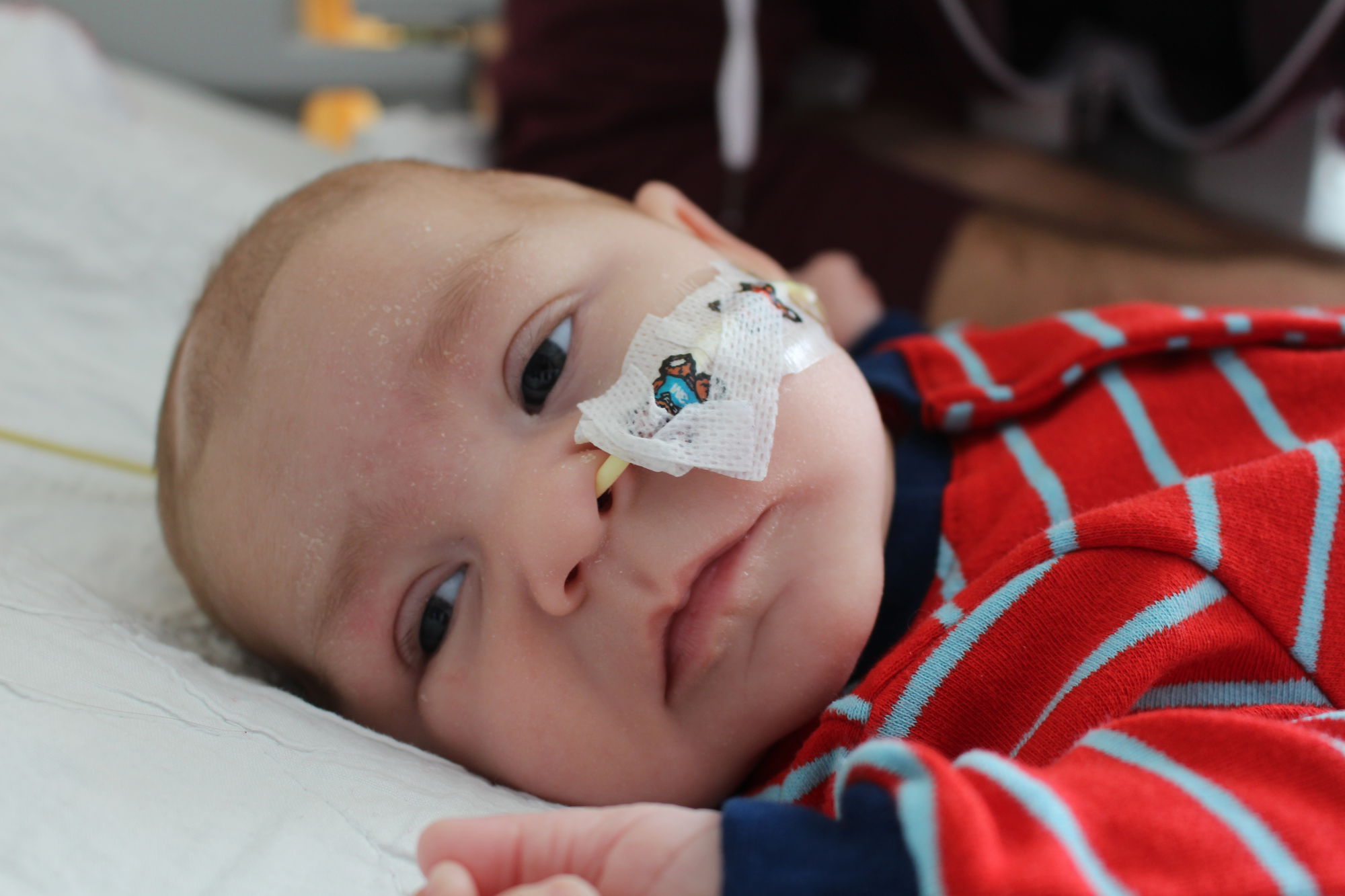
This was a big adjustment for us. Feeding your child is such a natural thing, whether it be breastfeeding, bottle feeding or messily trying to feed them solid foods. With the feeding tube, we would now setup formula feeds, start them and forget about it until the machine would start beeping at us, signaling the end of the feed. Félip could be fed while sleeping, playing, being changed, pretty much at any point and time during the day or night.
Félip did really well with the NG tube, we had to change it every week and were trained to do so before being sent home. When we finally did go home we were given a feeding pump to be able to give him his formula meals at a certain rate without worrying about it.
Acid Reflux
We think Félip always had an acid reflux problem from very early on. It didn’t seem so bad when he was born and Robyn was still breastfeeding because he wasn’t getting significant amounts (which is why he wasn’t gaining the proper weight). As we started feeding him appropriate amounts of formula through the feeding tube the problem became much more evident. He would randomly vomit after or towards the end of a feed and struggle with clearing his airways due to his low tone and low level of awareness. We started an acid reflux medication and constantly adjusted his feed portions and his pump rate. Try as we might, he was still vomiting frequently and he would often end up admitted at the children’s hospital for an aspiration.
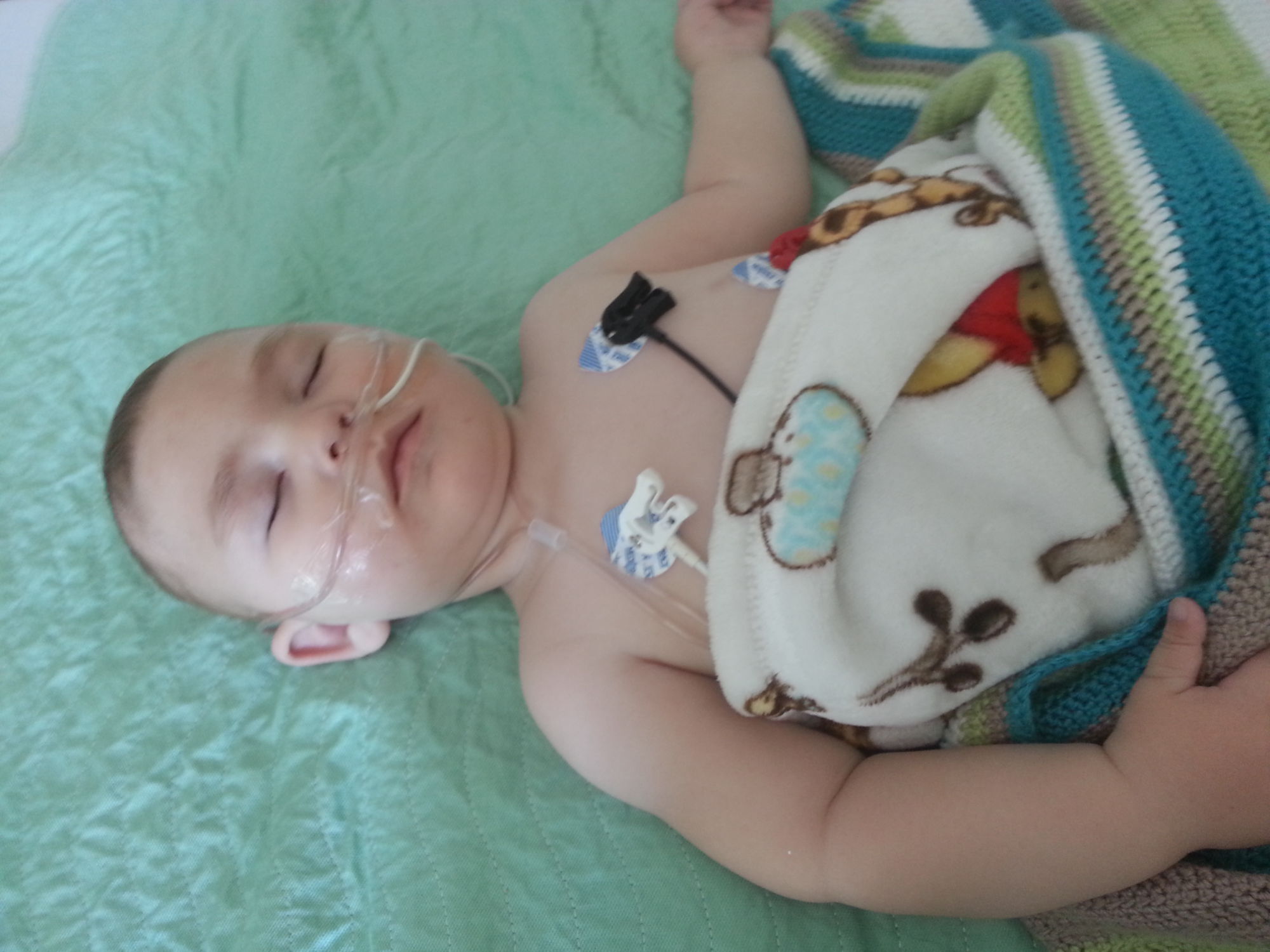
Aspirations were, and still are, very risky for Félip. Food, formula or any non-clear liquid has a much higher chance of causing an infection within his lungs (Pneumonia). Félip only developed Pneumonia from an aspiration once. It was horrible. He almost had to go to the intensive care unit (ICU) and his condition got worse really fast.
We would spend weeks at a time at the hospital whenever Félip had a bad aspiration. He would struggle and need oxygen support, more suctioning and constant medical attention.
This went on for a whole year. We became regulars on unit 3 at the children’s and had been seen by most rotating doctors and nurses.
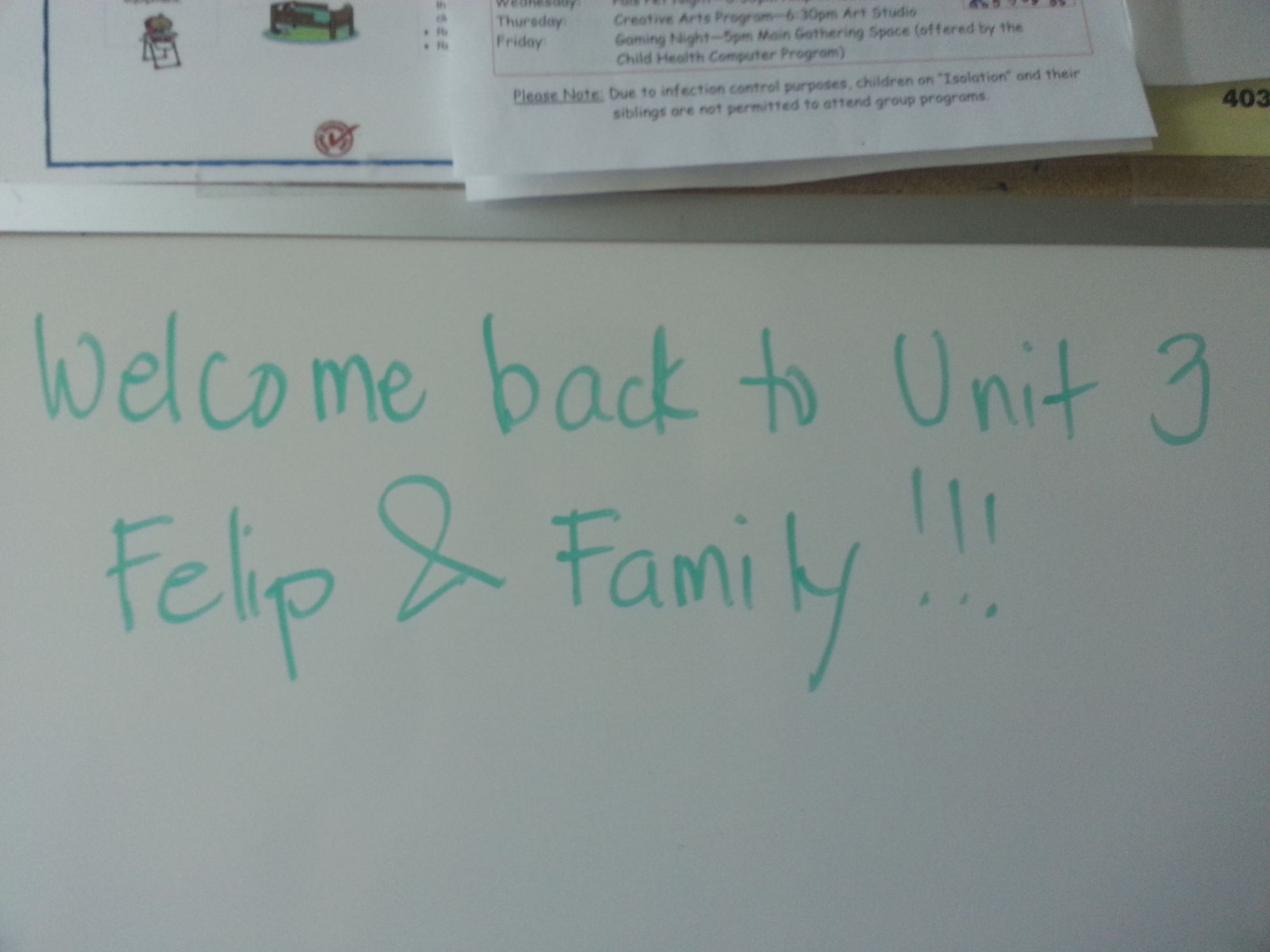
Continuous Feeding
As we kept trying to mitigate Félip’s risks and better his quality of life, his feeds became longer and longer. We kept slowing down his pump rate to try and reduce his acid reflux and therefore reduce aspirations. These changes helped but the acid reflux still remained. Eventually we started discussing the use of a Nasal-Jejunum tube (nj-tube). The difference with this kind of tube is that it is longer and bypasses the stomach to go straight into the first section of the intestines. Since formula never goes into the stomach, if a child retches, nothing actually comes up. This seemed to be pretty effective. Félip would still get episodes of acid reflux and retch but at least he wasn’t bringing up formula. The cons of an NJ-tube however are that you can’t reinstall it yourself and it requires continuous feeding at a very slow rate. This is because the jejunum is small and cannot take a large amount of formula. This means that the tube stays in for longer periods of time (1 month) and if it accidentally comes out it’s a trip to the ER and an uncomfortable process to get a new one inserted. The continuous feeding also means that Félip would effectively feed 24 hours a day.
G-tube and Fundoplication
We finally decided to move forward with a gastric tube (g-tube) surgery to get a permanent feeding solution. This is a surgery where they create a stoma or hole directly into stomach through the abdomen. For Félip, this meant no more feeding tubes through his nose and everything would just go directly through a valve attached to his abdomen.
We also decided to opt for a fundoplication for Félip. This is when they wrap the top part of the stomach around the esophagus to prevent stomach content from coming up with acid reflux.
These types of decisions are where we need to weigh the pros and cons of each alternative and thoroughly discuss this with his doctors and surgeons. We also often consult the palliative team that can help us navigate the quality of life aspect for Félip and weigh the risks of doing or not doing each intervention.
The surgery ended up being delayed twice, each time setting us back several weeks. The delays were due to Félip getting sick from aspirations. The irony was incredibly frustrating; he needed the surgery to alleviate feeding and acid reflux issues but kept having acid reflux and aspiration events that were preventing doctors from performing the surgery. After a few months of waiting and hoping, we were finally able to move forward.
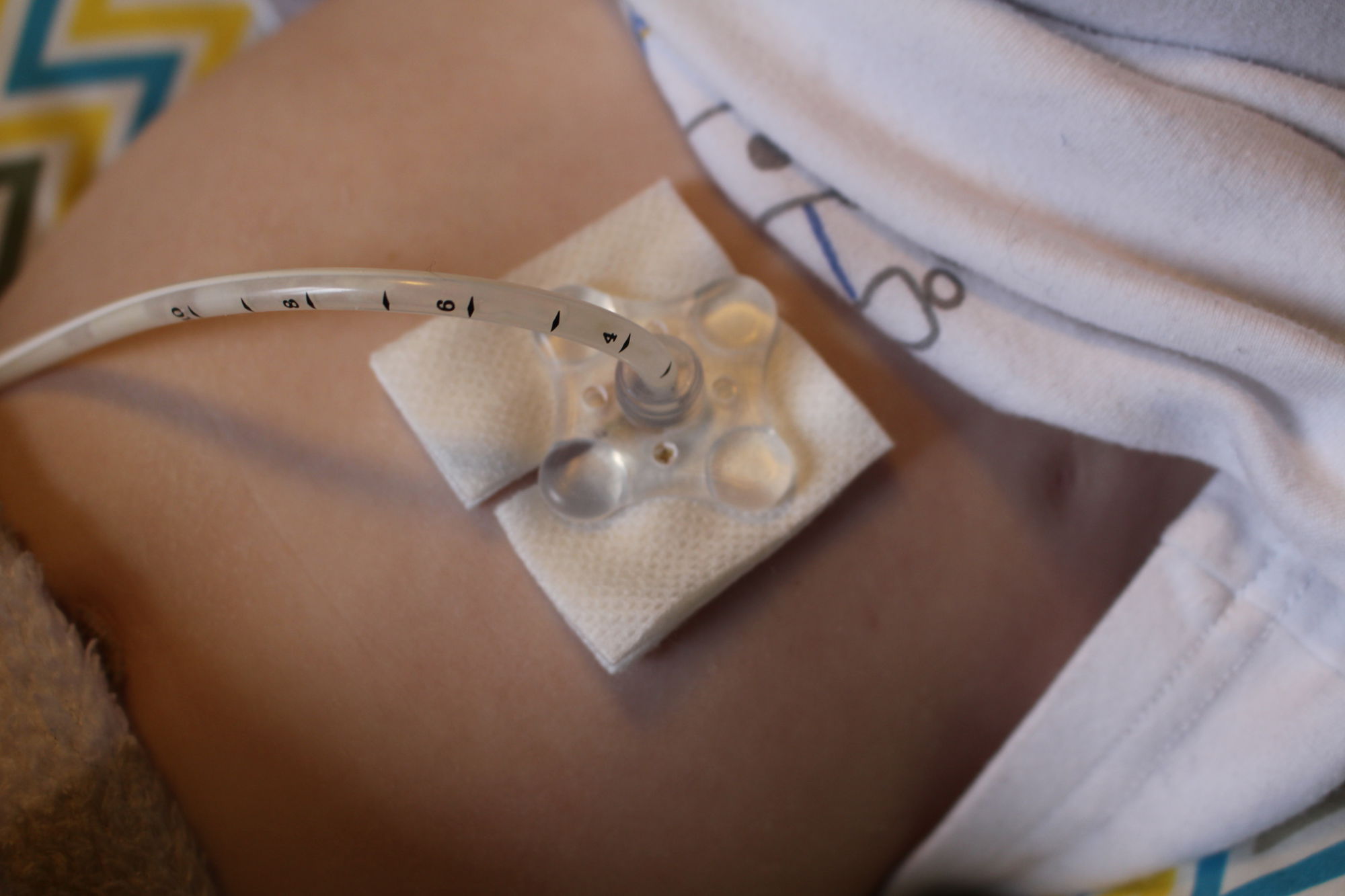
The g-tube and fundoplication surgery were incredibly successful! The doctors said his stomach was very tiny (due to the super slow rates we had been feeding him) and very irritated (due to the frequent acid reflux and retching). We were going to have to keep a slow rate of feeding and slowly increase it over time to make sure his stomach would grow and adjust to the amounts of formula. Our ultimate goal was to go back to bolus (individual/separate) feeds that would take less than an hour.
The fundoplication held up very well. For the first few months Félip would still get episodes of reflux and would retch without bringing anything up. This became less and less frequent until we were able to remove his anti-reflux medication completely.
G-tube Swap
Almost a full year after his original g-tube and fundoplication surgery we decided to move forward with changing his g-tube. Initially, after a new g-tube surgery, surgeons install a PEG g-tube that will help form and heal the patient’s track/stoma. Usually, this PEG g-tube is swapped for a regular Mic-Key g-tube after ~4-6 months, once the track has been deemed healed. The Mic-Key g-tube is maintainable, has a much smaller footprint (see pic below) and is what most people are used to seeing for a feeding tube.
We opted to wait almost 12 months because we were still accelerating Félip’s feeding rate. Feeding with a PEG g-tube vs. a Mic-Key g-tube has a few subtle differences. Those differences meant that for us, the PEG g-tube made it easier to feed Félip while he still required long meals that lasted up to 4 hours and went on even longer during the night. When we finally decided to move forward with the tube swap, his feeds were a lot shorter at about 1 hour and 10 minutes.
Blended Diet
Around the time of his g-tube swap we started discussing transitioning Félip to a blended diet. This came from our desire to provide him with a better whole-foods nutrition and to tailor his diet to not require supplemental laxatives. Furthermore, after talking to some our doctors on different teams we got a lot of support to remove dairy from Félip’s diet which was currently in his formula. Dairy has been shown to be an allergen that can weaken the immune system for many kids. It’s also known to make secretions worse, which for kids like Félip can make a big difference in day to day life.
We started slowly introducing different store bought and homemade purees one at a time to ensure Félip didn’t have any reactions. We kept increasing the amounts and variety until we felt his gut had gotten used to processing real food instead of formula. At the same time we ordered a Blendtec high speed blender to be able to start making fully blended meals at home. Blendtec was nice enough to offer us a refurbished unit at a medical discount for Félip.
Once we got our blender and got the okay from Félip’s pediatrician and dietitian we dived into the world of blended diets. We started by putting together a first recipe. We followed the nutrition guide the dietitian had given us and used a website called CRON-O-Meter to keep track of macronutrients and ensure Félip was getting a balanced diet.
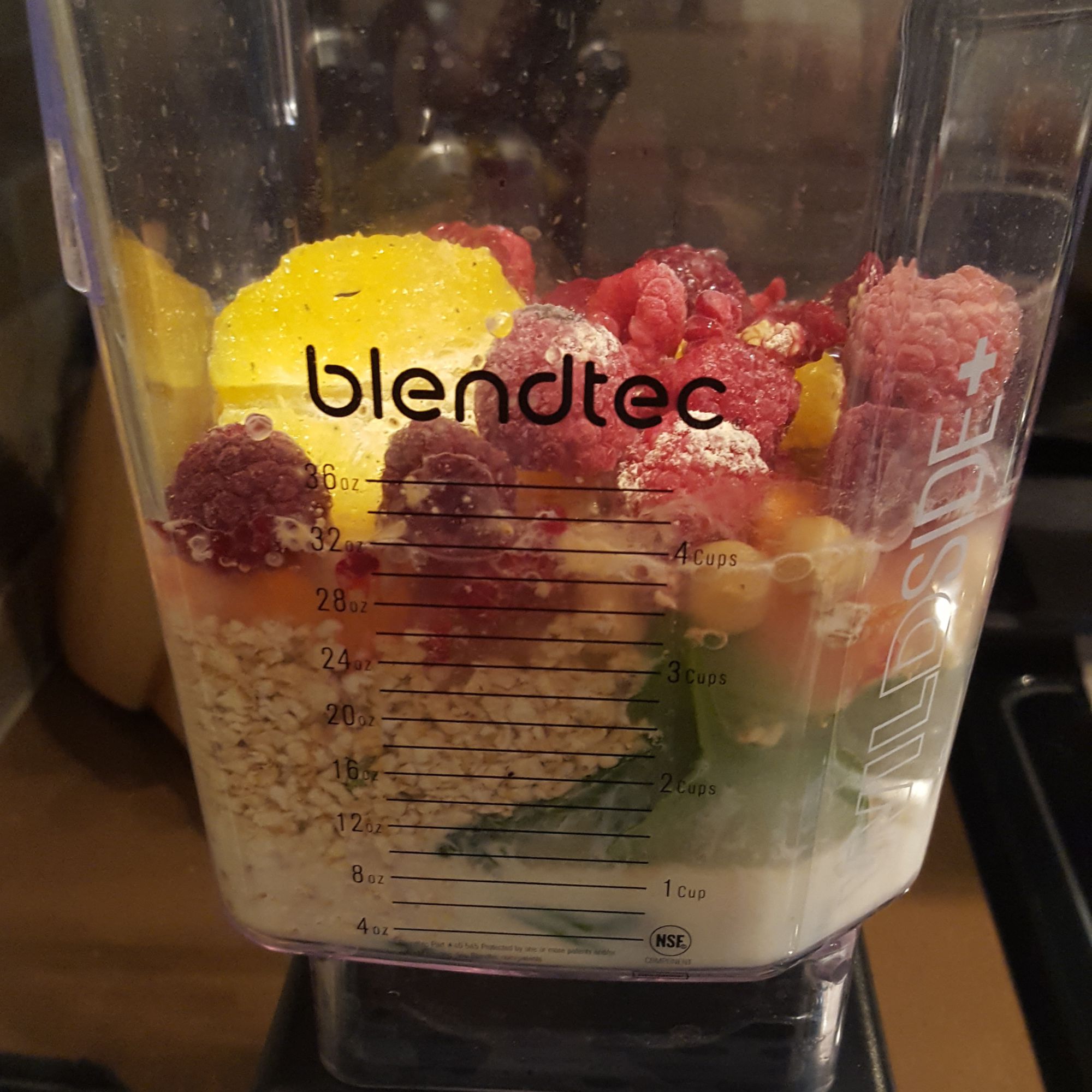
We quickly figured out that Félip’s pump and feeding bags couldn’t handle our homemade blends. This was a bit of a disappointment since we were still dealing with longer feeds and it would take most likely another several months for them to drop down to a reasonable time. We decided to start doing syringe feeds where we would draw up about 30 ml of blended food and put that through his feeding tube every 12 minutes. The only way to keep this going at a regular interval was to set a 12 min timer on our phone that we would keep restarting until the feed was over, which took almost 2 hours at this point in time. If we forgot to restart the timer or lost track of time it could put the whole day off schedule.
This didn’t feel like much of a win. We were so happy for Félip to be on a 100% wholefoods diet and off his formula but feeding him was a lot more involved and complicated than before.
Gravity Feeding
After doing syringe feeds and dealing with all the timers for about a week, we decided to try gravity feeding. How does gravity feeding actually work? It’s really simple. We just connect a large syringe (without the plunger) to Félip’s feeding tube and hold it above him, then we have a funnel on top of the syringe so that we can pour the blended meal into the syringe. That’s it. The blended liquid will make its way through the syringe and the feeding tube into Félip’s stomach. We keep adding more and more of the blended liquid to the syringe as it goes down until we’re done. We repeat this 4 times a day. We also give him water the same way.

The nice thing about gravity feeding is that it’s not as forceful. If Félip coughs or puts pressure on his tummy the liquid actually stops flowing because it relies strictly on gravity.
This brings us to today. At the moment of writing this, Félip is still on a 100% whole foods blended diet, does not require any supplemental laxatives, gets a full meal within 5-20 minutes, does not get any food overnight and he’s doing great!
Feeding Félip is so easy now, and it doesn’t required a lot of preparation or cleanup afterwards either. We couldn’t have imagined that things would become this easy! We feel like our feeding routine now enables us to take advantage of our day with Félip. Traveling is so much easier now and we can actually plan things in between feeds.
As always… Love. Laugh. Repeat.

